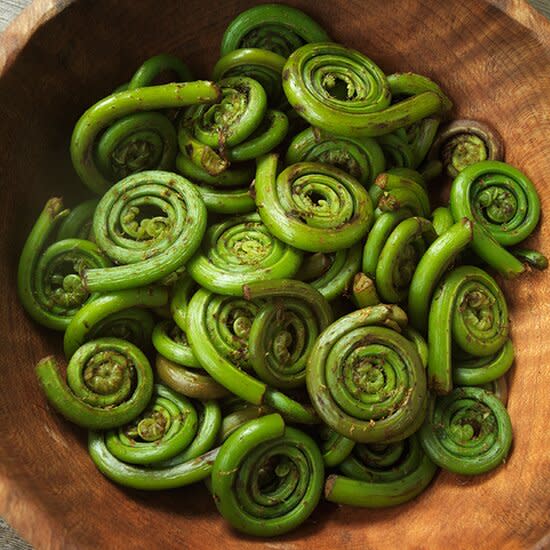Everything You Need to Know About Fiddlehead Ferns

If you think ferns are only good for decorating office lobbies, you're wrong. They are also the source of one of the most whimsical vegetables around: fiddleheads. The curled up fern fronds may seem odd because of their shape, but the ultra-seasonal vegetables are well worth seeking out. Here's what you should know before heading to the farmers' market.
Where: Fiddleheads can be found in much of the United States as well as Europe, Asia and Canada: In fact, Tide Head, New Brunswick, calls itself the Fiddlehead Capital of the World.
When: May.
What to look for: Small coils that are tightly wound up. Fiddleheads should be a vibrant bright green, unless they are still covered in their brown papery skin. The skin should come off easily when rubbed. Purchase or pick only ostrich fern fiddleheads, as they are the safest for consumption.
Flavor profile: Fiddleheads are sweet like asparagus, grassy and snappy like a great green bean, with a touch of broccoli stem.
Health benefits: Rich in potassium, iron, antioxidants and omega-3 fatty acids, fiddleheads are fantastically healthy.
How to eat them: Because ostrich ferns contain a trace amount of a toxin, you should never eat them raw. (Not that you would want to—they are quite bitter when raw.) Cook them for at least 5 minutes. First, prep the fiddleheads by rinsing them and rubbing off any papery brown skin. Then they can be steamed, braised, sautéed, roasted or pickled (after blanching). Don't get too fancy with the little guys. Serve them simply dressed in a vinaigrette or a creamy hollandaise, as you would fresh asparagus.
